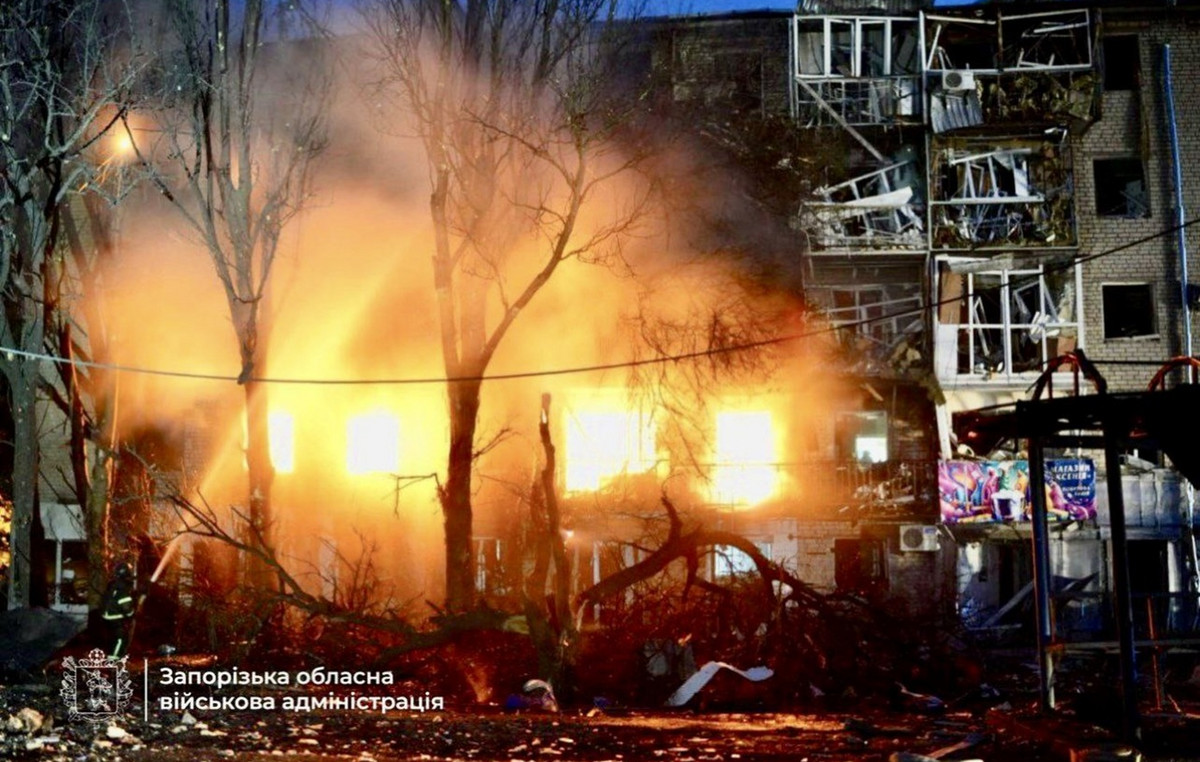This Monday (21), a Boeing 737 with 132 people on board crashed in China. The plane, belonging to China Eastern Airlines, was found in the mountains of the Guangxi region, in the south of the country.
The Boeing was traveling from the city of Kunming to Guangzhou in the southwest when it lost contact over the city of Wuzhou. Inside the aircraft were 123 passengers and nine crew, according to a statement from the Civil Aviation Administration of China (CAAC).
According to China’s state media CCTV, the Rescue teams found no signs of survivors.. In addition, the cause of the accident has not yet been determined. However, it is known that the plane was in service and operating with China Eastern Airlines since 2015.
Although many of the details about the crash are still unclear, there is important information that helps to understand the crash of the aircraft. See the trajectory of the aircraft:
The accident
The flight departed Kunming at 1:11 pm local time (02:11 GMT), FlightRadar data showed, and was due to land in Guangzhou at 3:05 pm (04:11 am).
The plane was flying at an altitude of 29,100 feet at 03:20 GMT. Just over two minutes and 15 seconds later, the data showed it had descended to 9,075 feet.
In another 20 seconds, its last tracked altitude was 3,225 feet, indicating a vertical descent of 31,000 feet per minute, according to Flightradar. Weather data available online showed partly cloudy conditions with good visibility in Wuzhou at the time of the accident.
Investigators will attempt to recover the plane’s two black boxes – the flight data recorder and the cockpit voice recorder – to help clarify the accident.
According to the Aviation Safety Network, the last fatal jet crash in China was in 2010, when 44 of the 96 people on board died when a Henan Airlines Embraer E-190 regional jet crashed on approach to Yichun airport, which was low visibility.
In 1994, a China Northwest Airlines Tupolev Tu-154 flying from Xian to Guangzhou crashed, killing all 160 people on board and ranking as China’s worst air disaster, according to the Aviation Safety Network.
Boeing 737-800 model
The plane that suffered the accident was a Boeing 737-800. This is the most common version of Boeing jets currently in service, and is the flagship of many airline fleets.
There are 4,502 of the 737-800s in service worldwide, according to aviation analytics firm Cirium, making it by far the most common Boeing aircraft in service.
It is the most used aircraft model in the United States, where there are 795 in service, as well as in China, which has 1,177 in service. The model is still the second most used aircraft in the world, behind only the A320 manufactured by Airbus.
The 737-800 is an older model, which has recently been replaced by the 737 Max.
Initial images of the accident
Images posted online and shared by Chinese state media People’s Daily show clouds of smoke billowing from a mountainous, forested area. A clip shows what appears to be the plane’s wreckage on a muddy mountain road.
Other videos recorded by security cameras at a mining company close to the accident region – which have not yet been confirmed by Chinese authorities nor by independent media outlets – were obtained by local Chinese media.
The images show an aircraft diving towards the ground at an angle of about 35 degrees from the vertical. A sudden and beak descent, as the videos show, is rare in air accidents.
Flight tracking data taken by FlightRadar24 showed that China Eastern Flight 5735 fell over 25,000 feet in less than two minutes.
In addition, surveillance information indicated that the Boeing 737-800 was at a cruising altitude of 8,839 meters when it began a rapid descent. The dive stopped briefly near 3,050 meters before restarting. Flight data was lost 975 meters above the ground.
FlightRadar24 published the information along with a graph illustrating the dramatic decline. “At 06:20:59 UTC the Boeing 737-800 aircraft began to lose altitude very quickly. At 06:22:35 UTC the last ADS-B signal showed a vertical speed of -31,000 feet per minute,” the post reads.
Flightradar24 data for China Eastern Airlines flight #MU5735 from Kunming to Guangzhou.
At 06:20:59 UTC the Boeing 737-800 aircraft started to lose altitude very fast. At 06:22:35 UTC last ADS-B signal showed vertical speed -31,000 feet per minute.https://t.co/Lwo8klGf8g pic.twitter.com/UEZaa9asua
— Flightradar24 (@flightradar24) March 21, 2022
Past security issues
Boeing began deliveries of the 737-800 in 1998, but has not delivered a civilian version of the plane since two went to China Eastern in January 2020.
The Boeing 737-800 is part of a class of Boeing jets known as the 737-NG. NG planes have had safety issues cited by US regulatory agencies, although none of them have reached the level of requiring the planes to be banned from taking off.
In 2018, a single passenger was killed on a Boeing 737-700, another NG model. On that occasion, an engine fan blade on a Southwest Airlines flight broke and caused part of the engine cover to hit the side of the plane.
The part broke one of the windows, and the cabin quickly depressurized. The crew managed to land the plane safely, but a woman sitting beside the stricken window was killed.
In 2019, the US National Transportation Safety Board recommended that Boeing redesign part of the aircraft’s engine covers to prevent them from flying into the plane in the event of a similar malfunction. Boeing agreed to make the change.
On some older planes, a part used to hold the wings in place was found to have cracks. These cracks temporarily prevented several 737 NG models from taking off.
Other fatal accidents involving the 737-800 occurred when the planes were landing in bad weather and skidded or left the runways. Two models of the aircraft were hit by missiles as they flew, one in Ukraine in 2014 and the other in Iran in 2020.
The company’s Boeing 737-800 aircraft will remain on the ground
For its part, China Eastern Airlines has indicated that it will stop all its Boeing 737-800 flights from taking off, according to Chinese state media CCTV.
Flights in progress with this aircraft “will no longer fly after landing”. Boeing said in a statement that it was “aware of initial media reports and working to gather more information”.
Chinese president orders rescue operations
Chinese President Xi Jinping ordered the country’s emergency services to “organize a search and rescue operation” and “identify the causes of the crash” of the plane, state media reported.
“Following the accident, President Xi Jinping immediately gave instructions to activate the emergency mechanism, organize search and rescue and properly deal with the aftermath,” CCTV said.
However, rescue efforts could face obstacles due to bad weather and limited accessibility to the site, Chinese state media reported.
Rescue workers cannot access the crash site, which has no electricity as it is surrounded by mountains on three sides and can only be reached by a narrow path, state-run CCTV said, citing the Guangxi Wuzhou Fire Department.
In addition, the Guangxi Meteorological Department said officials should take note of the adverse impacts on rescue efforts due to a cold front that is expected to bring heavy rains and a drop in temperature in Tengxian County, Guangxi Province, where the site of the earthquake is located. accident.
The Boeing 737 Max
Another Boeing model, the 737 Max, suffered two fatal crashes, in 2018 and 2019, which were caused by a design flaw and led to a global disruption of the aircraft’s flights for 20 months.
The grounding of takeoffs due to the accidents cost Boeing tens of billions of dollars. The 737-800 lacks the feature that caused the 737 Max crashes.
The 737-800 model, which suffered the accident on Monday, is the predecessor of the 737 MAX model, which has been stranded in China for more than three years after fatal accidents in 2018, in Indonesia, and in 2019, in Ethiopia.
Marketplace
Aviation data provider OAG said this month that state-owned China Eastern Airlines was the sixth largest in the world by scheduled weekly seating capacity and the largest in China.
China has had a relatively strong domestic aviation market during the coronavirus pandemic, despite tight restrictions on international flights. China’s aviation industry’s safety record has been among the best in the world over the past decade.
Boeing shares fell 8% before the opening of trading on Monday (21). Boeing did not immediately respond to a request for comment.
China Eastern Airlines 0670.HK shares in Hong Kong closed down 6.5% after news of the crash, while its US-listed CEA shares fell 17% in premarket trading.
*With information from Reuters
Source: CNN Brasil
I’m James Harper, a highly experienced and accomplished news writer for World Stock Market. I have been writing in the Politics section of the website for over five years, providing readers with up-to-date and insightful information about current events in politics. My work is widely read and respected by many industry professionals as well as laymen.







